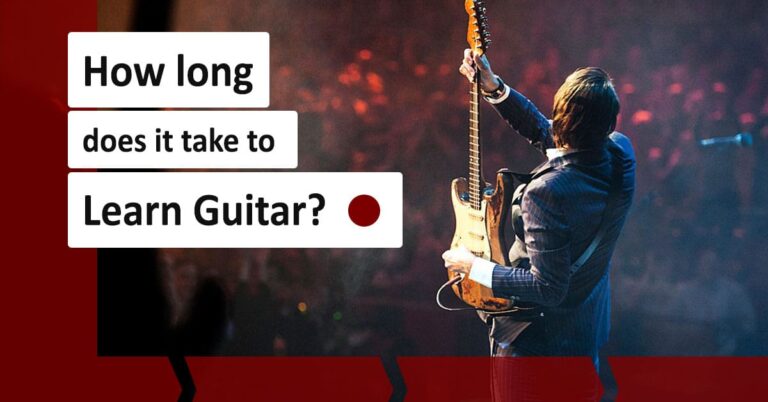Being able to instantly identify, and move to different notes along the fretboard is a must know skill for anyone serious about learning to play the guitar. Knowing your way around the neck of the guitar is important for playing chords and chord progressions, for improvising, and an absolute must if you want to start writing your own songs as well.
Learning the notes on the fretboard is not really hard, it just takes some studying. Thankfully, the guitar is built in such a way, that allows us to easily identify the notes on 4 of the 6 strings, after learning the notes on the low E and A strings. This is due to the relationship between the notes on the strings. If you haven't done so yet, watch our video guitar lesson on learning guitar notes, I explain the following on video, which makes it even easier to digest.
Learn the Notes on String A and E (Strings 5 and 6)
First off, you'll need to be able to identify the notes on the 2 lower strings. You're going to have to memorize these notes, there's no way around it. It is important to realize, that there are 12 notes to an octave, so you basically just have to learn the position of those 12 notes by heart on both strings. And when I say learn, I mean really learn. If someone wakes you up in the middle of the night and asks you which note is at fret 7 of string A, you'll have to instantly reply E.

Learning the Notes on the Other Strings
Good news! Once you can recite the notes on the 2 lowest strings by heart, you won't have to memorize the notes on the other strings, due to the fact that the guitar has, over the centuries, developed to be an "easy" to learn instrument. This is due to the relationship of the notes across the strings.
If you've watched our video lesson on guitar tuning, you'll know that most strings are 5 semitones apart in tone, with the exception of string G and B, which are 4 frets apart. Knowing this allows us to identify the notes on the higher pitches strings very easily (if you've learned the notes on the low strings already).

Since there are 12 notes (semitones) in an octave before the notes start repeating, you'll know that 12 frets up from the open E string, you'll arrive at the note E again. Now if you take this, and move up a string whenever possible, you'll be able to identify the notes on the D string as so:
- Start from the low open E string, and start counting the semitones upwards
- Arriving at the fifth semitone from E, you will be on the note A.
- At this point, you can move up one string to the open A string, and continue counting from there.
- Again, when you reach the 10th semitone, you'll be on the D note, and you'll be able to move up one string to the open D string.
- Now counting 2 more notes up, you'll arrive at the full octave of the original open E string note of E, specifically on string D fret 2. This will be exactly the same pitch note, as if you would have counted 12 frets all the way up from the open E string.
Notes on the D and G strings
So once you know the notes on the low E and A strings of the fretboard, you'll know the notes on strings D and G as well. The beauty of this is that it makes recognizing the notes on these strings really easy, since all you have to do is know the note 2 strings and 2 frets down from the one you are trying to find.
Notes on the G string
String B is slightly different. You're going to have to count 12 frets as before, but since you get the note B on the 4th fret of string G, you'll effectively know the notes 2 strings and 3 frets from the one you are trying to find.
Notes on the high E string
And of course, you don't need to learn the high E string notes, since you already know them from learning the low E string.
If you seriously want to teach yourself guitar, you'll need to learn the notes on the fretboard. It is a very important aspect of becoming a good guitarist, so start memorizing, it's easy once you get into it.





I love this page and the instruction it gives. It looks like the first diagram is off though. The 12th fret list E, A, D, G, C, E. Shouldn’t it be E, A, D, G, B, E? It appears an A# is missing on the 11th fret of the B string, and some others are off as a result. Sorry to be a critic, because like I said, I found this page useful and noticed because I was using it to study.
Oh wow, you’re right, thanks for bringing this to my attention! Just corrected it.